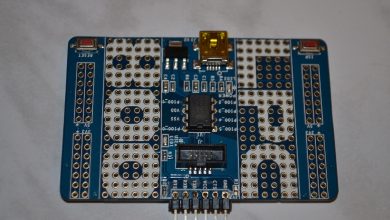Mastering Elements of a Solid SAN Storage Strategy
Mastering Elements of a Solid SAN Storage Strategy

A SAN, or Storage Area Network, is a key part of your business’s infrastructure. It allows you to store large amounts of data and access it quickly and easily. In order to get the most out of your SAN storage solution, you need to understand the key elements that make up a solid SAN strategy. This blog post will teach you everything you need to know about SANs!
SAN Storage Composition
SANs are made up of three key components: controllers, switches, and disks. Controllers are the brains of the SAN, responsible for managing data flow and storage. Switches connect the controllers to the disks, which store the actual data. Disks come in two varieties: hard disk drives (HDDs) and solid state drives (SSDs). HDDs are cheaper and have more storage capacity, but they are slower than SSDs. SSDs are more expensive and have less storage capacity, but they are much faster than HDDs.
SAN Storage Controller Types
There are two types of SAN controllers: Fibre Channel (FC) and Internet Small Computer System Interface (iSCSI). FC controllers are the most common type of SAN controller. They use a technology called Fibre Channel Arbitrated Loop (FC-AL) to connect to the disks. iSCSI controllers are less common, but they are becoming more popular because they are less expensive than FC controllers. iSCSI uses a technology called Internet Protocol (IP) to connect to the disks.
SAN Storage Switch Types
There are two types of SAN switches: Fibre Channel (FC) and Internet Small Computer System Interface (iSCSI). FC switches are the most common type of SAN switch. They use a technology called Fibre Channel Arbitrated Loop (FC-AL) to connect to the controllers and disks. iSCSI switches are less common, but they are becoming more popular because they are less expensive than FC switches. iSCSI uses a technology called Internet Protocol (IP) to connect to the controllers and disks.
SAN Disk Types
There are two types of SAN disks: hard disk drives (HDDs) and solid state drives (SSDs). HDDs are cheaper and have more storage capacity, but they are slower than SSDs. SSDs are more expensive and have less storage capacity, but they are much faster than HDDs.
SAN Capacity
SANs can be small, with just a few disks, or large, with hundreds or even thousands of disks. The size of your SAN will depend on the needs of your business. If you have a small business, you may only need a few hundred gigabytes (GB) of storage. If you have a large enterprise, you may need several terabytes (TB) of storage.
SAN Performance
The performance of your SAN will depend on the types of disks you use, the type of controller you use, and the type of switch you use. If you want the best performance, you should use SSDs, FC controllers, and FC switches. If you are on a budget, you can use HDDs, iSCSI controllers, and iSCSI switches.
SAN Connectivity
SANs can be connected to the rest of your network in two ways: Fibre Channel (FC) and Internet Small Computer System Interface (iSCSI). FC SANs use a technology called Fibre Channel Arbitrated Loop (FC-AL) to connect to the controllers and disks. iSCSI SANs use a technology called Internet Protocol (IP) to connect to the controllers and disks.
SAN Storage Management
SANs can be managed in two ways: through a graphical user interface (GUI) or through a command-line interface (CLI). GUIs are easy to use and allow you to manage your SAN with a few clicks of the mouse. CLIs are more difficult to use, but they offer more control over your SAN.
SAN Storage Best Practices
There are a few best practices you should follow when configuring your SAN:
– Use RAID to protect your data. RAID stands for “redundant array of independent disks” and it is a technology that allows you to combine multiple disks into one logical unit.
– Use Fibre Channel controllers and switches for the best performance.
– Use iSCSI if you are on a budget.
– Use SSDs for the best performance.
– Use HDDs if you need more storage capacity.
– Manage your SAN using a GUI or CLI.
Conclusion
SAN solutions are an important part of any storage strategy. By understanding the key elements of a SAN, you can create a SAN that meets the needs of your business.
Do you have any questions about SANs? Leave a comment below and let us know! Thanks for reading!


